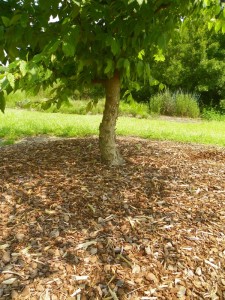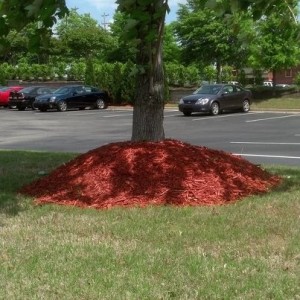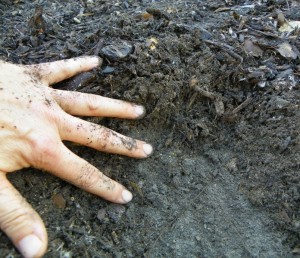Can Too Much Mulch Kill Plants?
go.ncsu.edu/readext?185833
en Español / em Português
El inglés es el idioma de control de esta página. En la medida en que haya algún conflicto entre la traducción al inglés y la traducción, el inglés prevalece.
Al hacer clic en el enlace de traducción se activa un servicio de traducción gratuito para convertir la página al español. Al igual que con cualquier traducción por Internet, la conversión no es sensible al contexto y puede que no traduzca el texto en su significado original. NC State Extension no garantiza la exactitud del texto traducido. Por favor, tenga en cuenta que algunas aplicaciones y/o servicios pueden no funcionar como se espera cuando se traducen.
Português
Inglês é o idioma de controle desta página. Na medida que haja algum conflito entre o texto original em Inglês e a tradução, o Inglês prevalece.
Ao clicar no link de tradução, um serviço gratuito de tradução será ativado para converter a página para o Português. Como em qualquer tradução pela internet, a conversão não é sensivel ao contexto e pode não ocorrer a tradução para o significado orginal. O serviço de Extensão da Carolina do Norte (NC State Extension) não garante a exatidão do texto traduzido. Por favor, observe que algumas funções ou serviços podem não funcionar como esperado após a tradução.
English
English is the controlling language of this page. To the extent there is any conflict between the English text and the translation, English controls.
Clicking on the translation link activates a free translation service to convert the page to Spanish. As with any Internet translation, the conversion is not context-sensitive and may not translate the text to its original meaning. NC State Extension does not guarantee the accuracy of the translated text. Please note that some applications and/or services may not function as expected when translated.
Collapse ▲Are you your landscapes worst enemy? Is your motto, “If a little is good, a lot is better”? If so you may be killing your plants with kindness, especially when it comes to mulch. While all plants grow better with mulch, too much can kill them. The secret to nurturing a healthy landscape is to know when enough is enough.
Watch Your Layers
Fall is the time many gardeners add a fresh layer of mulch to their landscape. This year, before topping up your beds, first measure how much mulch is already there. A two to four inch layer is ideal, and provides many benefits to plants. These include weed suppression, moisture retention, and the slow addition of organic matter to the soil as the mulch decomposes. Another important benefit of mulching around trees and shrubs is that it keeps mowers and weed trimmers away from their trunks, which can be easily damaged by such equipment.
Since mulch does so many good things, it is easy to think more would be better. In reality, thicker layers of mulch harm plants. When mulch builds up over four inches it often becomes hydrophobic, or water repellent. When this happens water simply sheds off the top of the mulch rather than soaking in to the soil below, leaving plants thirsty. Thick layers of mulch can also suffocate plant roots. We don’t often think about the role of air in the soil, but roots need air to survive. Burying root systems under excessive layers of mulch reduces the amount of air in the soil, causing plants to decline. This decline is usually slow, often taking years for plants to die from over mulching.
If you already have a four inch layer of mulch on your beds but wish to add more to brighten up the bed’s appearance you have two options. One is to remove part of the mulch that is already there before adding new mulch. You can add the old mulch to your compost pile or use it as an under layer for new beds. The other option is to just stir up the mulch you have. Often only the top layer loses its bright appearance and if you mix the mulch up a bit you will bring some of the more richly colored lower layers to the surface.
Avoid Volcanoes
Especially harmful is the practice known as volcano mulching, where deep layers of mulch are piled up against the trunks of trees. In addition to suffocating roots, this type of mulching encourages voles and other pests. If your trees look like they are erupting out of a mountain of mulch, you have volcano mulch. To protect the health of your trees, pull excess mulch away from tree trunks. Ideally there should be a two to four inch layer of mulch extending out to the dripline, or edge of the tree canopy. Taper the mulch level down near the trunk so no mulch actually touches a tree’s trunk. Also avoid piling mulch into the center of shrubs or dumping thick layers of mulch on top of perennials.
Keep Soil and Mulch Separate
Another common mistake is to treat mulch like a soil amendment, mixing it into the soil when you plant. Soil amendments like compost or finely ground pine bark have already broken down into small particles. When mixed into the soil, they slowly release nutrients, help retain moisture and also improve drainage. Most mulches are too coarse to make good soil amendments. This is especially true of hardwood mulches, pine straw, and pine nuggets.
Often mulch and soil are mixed together by accident when new plants are set out. Over time, you can build up a layer of mixed soil and mulch that is several inches thick. Plants typically do not grow well in this mix because it stays too dry and because the decaying mulch actually pulls nitrogen out of the soil through a process known as nitrogen drawdown. To avoid mixing mulch with soil, always rake mulch away from the area before planting. If you have beds where mulch has become mixed with the soil, rake down to the soil level and be sure to plant into soil rather than mulch.
Learn More
Learn more about the dangers of over mulching from these online resources:
- Mulch Can Damage Trees (Florida Extension): http://hort.ifas.ufl.edu/woody/over-mulching.shtml
- For a more opinionated view, read what the Grumpy Gardener (aka garden writer Steve Bender) has to say about over mulching:
http://thedailysouth.southernliving.com/2011/08/01/dont-mulch-too-much/
Visit your local Cooperative Extension office to learn more about gardening and landscape care. Go to
- If you live in Pender County, call 910-259-1235
- In New Hanover County, call 910-798-7660
- In Brunswick County, call 910-253-2610
- In Onslow County, call 910-455-5873
- In Duplin County, call 910-296-2143






